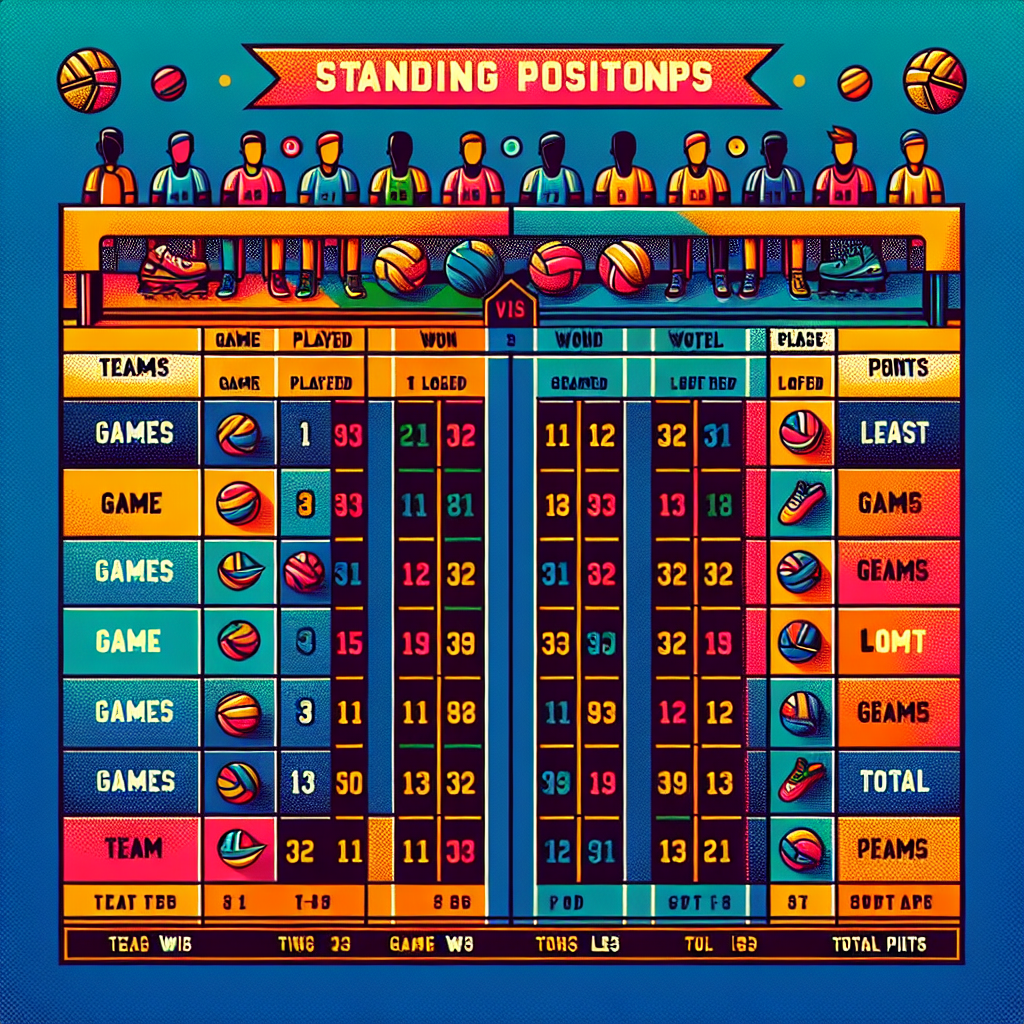Understanding the Vivo PKL Table: A Comprehensive Guide

In the world of sports and entertainment, the Vivo PKL (Pro Kabaddi League) has emerged as a significant event, captivating audiences across India and beyond. The league has not only popularized the traditional sport of kabaddi but also introduced a structured format that includes a points table, commonly referred to as the “Vivo PKL Table.” This article delves into the intricacies of the Vivo PKL Table, exploring its significance, structure, and impact on the league’s dynamics.
The Rise of Pro Kabaddi League
Before diving into the specifics of the Vivo PKL Table, it’s essential to understand the context in which the Pro Kabaddi League operates. Launched in 2014, the league was a brainchild of Mashal Sports and Star India, aiming to bring the indigenous sport of kabaddi to the forefront of Indian sports culture. The league’s format, inspired by the Indian Premier League (IPL), has been instrumental in transforming kabaddi into a commercially viable and widely followed sport.
The Format of the League
The Pro Kabaddi League follows a franchise-based model, with teams representing various cities across India. Each season, these teams compete in a round-robin format, followed by playoffs, culminating in a grand finale. The league’s structure ensures a competitive environment, where every match holds significance in determining the standings on the Vivo PKL Table.
Decoding the Vivo PKL Table
The Vivo PKL Table is a dynamic representation of the league’s progress, reflecting the performance of each team throughout the season. It serves as a crucial tool for fans, analysts, and teams themselves to gauge standings and strategize accordingly.
Components of the Vivo PKL Table
The table comprises several key components that provide a comprehensive overview of the league’s status:
- Matches Played (MP): This column indicates the total number of matches each team has played during the season.
- Wins (W): The number of matches a team has won.
- Losses (L): The number of matches a team has lost.
- Ties (T): Matches that ended in a draw.
- Points (Pts): Points are awarded based on match outcomes, with a win typically earning a team 5 points, a tie 3 points, and a loss 1 point if the margin is less than 7 points.
- Score Difference (SD): The difference between points scored and points conceded, which can be crucial in tie-breaking scenarios.
Significance of the Vivo PKL Table
The Vivo PKL Table is not just a reflection of team standings; it plays a pivotal role in shaping the league’s narrative:
- Strategic Planning: Teams use the table to strategize their gameplay, focusing on improving their standings and securing a spot in the playoffs.
- Fan Engagement: The table keeps fans engaged, providing them with a clear picture of their favorite team’s performance and playoff prospects.
- Media Coverage: Sports analysts and media outlets rely on the table for insights, predictions, and discussions, adding depth to their coverage.
Case Studies: Impact of the Vivo PKL Table
To understand the real-world impact of the Vivo PKL Table, let’s explore a few case studies from past seasons:
Case Study 1: The Rise of Dabang Delhi KC
In the 2019 season, Dabang Delhi KC showcased a remarkable performance, consistently topping the Vivo PKL Table. Their strategic gameplay, led by star raider Naveen Kumar, allowed them to maintain a strong position throughout the season. The table’s insights helped the team focus on areas of improvement, ultimately leading them to their first-ever PKL title.
Case Study 2: The Resurgence of Bengal Warriors
The Bengal Warriors’ journey in the 2017 season is another testament to the table’s influence. Initially struggling in the league, the team used the Vivo PKL Table to identify weaknesses and recalibrate their strategies. Their efforts paid off as they climbed the standings, eventually securing a spot in the playoffs and winning the championship.
Statistics and Trends
Analyzing statistics from the Vivo PKL Table provides valuable insights into the league’s trends and dynamics:
- Winning Streaks: Teams with consistent winning streaks often dominate the table, as seen with Patna Pirates during their three consecutive title wins from 2016 to 2017.
- Close Contests: The table highlights the competitiveness of the league, with many matches decided by narrow margins, emphasizing the importance of every point.
- Player Impact: Individual performances, such as those by Pardeep Narwal and Rahul Chaudhari, significantly influence team standings, showcasing the role of star players in shaping the table.
Challenges and Criticisms
While the Vivo PKL Table is an essential component of the league, it is not without its challenges and criticisms:
- Complex Scoring System: The points system, particularly the bonus point for narrow losses, can be confusing for new fans, necessitating better communication and education.
- Injury Impact: Injuries to key players can drastically affect a team’s position on the table, highlighting the need for depth in squad selection.
- Mid-Season Changes: Mid-season rule changes or player transfers can disrupt team dynamics, impacting their standings on the table.
The Future of the Vivo PKL Table
As the Pro Kabaddi League continues to evolve, so too will the Vivo PKL Table. Future enhancements may include:
- Advanced Analytics: Incorporating advanced analytics and data visualization to provide deeper insights into team and player performances.
- Fan Interaction: Enhancing fan interaction with the table through digital platforms, allowing for personalized experiences and real-time updates.
- Global Expansion: As the league gains international traction, the table could incorporate global metrics, comparing performances across different kabaddi leagues worldwide.
Conclusion
The Vivo PKL Table is more than just a scoreboard; it is a dynamic tool that shapes the narrative of the Pro Kabaddi League.



